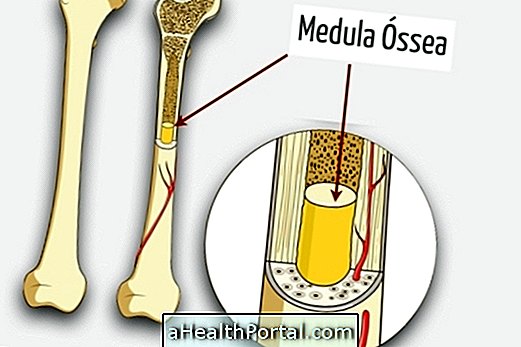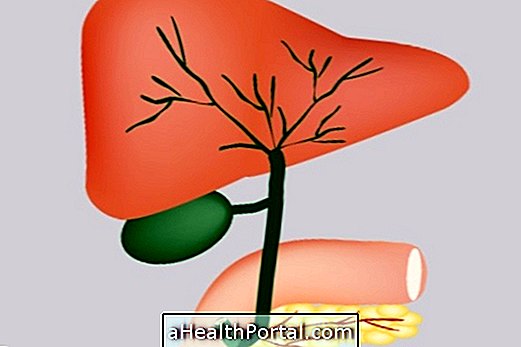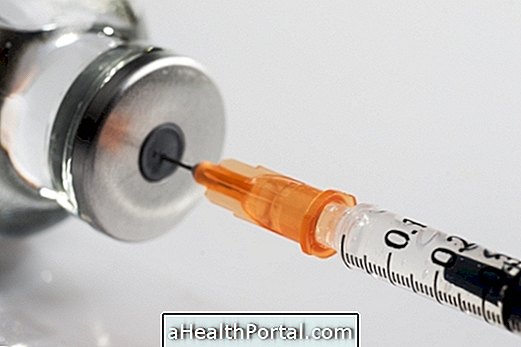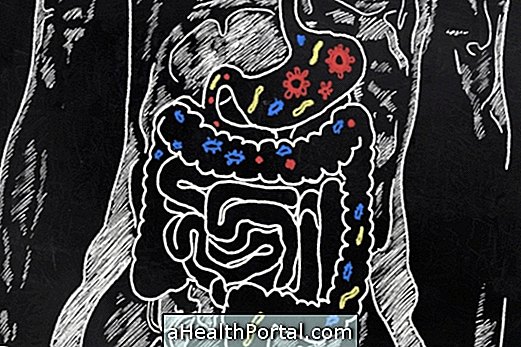Bone marrow transplantation is a widely used therapeutic strategy for diseases that affect blood cells, such as lymphoma and leukemia, where the bone marrow is deficient, ie it can not properly perform its function of producing blood cells and of the immune system, such as red blood cells, platelets, lymphocytes and leukocytes.
Bone marrow consists of hematopoietic stem cells, or HTCs, which are in fact responsible for the production of blood and immune cells. Thus, bone marrow transplantation is done with the objective of replacing the deficient bone marrow with a healthy one by means of functional HTCs.
There are 2 main types of bone marrow transplantation, which include:
- Autologous bone marrow transplantation: Healthy cells are removed from the patient before starting treatment with chemotherapy or radiation, and are injected back into the body after the treatments to allow the creation of more healthy cells. Understand how auto transplantation is done.
- Allogeneic marrow transplant: cells to be transplanted are taken from a healthy donor, who must do special blood tests to ensure cell compatibility, and transplanted into a compatible patient.
In addition to these types of transplants, there is a new technique for storing stem cells from the baby's umbilical cord and can be used to treat cancer and other health problems that arise during the life of the baby or another compatible person.

How is the transplant done?
Bone marrow transplantation is a procedure that lasts around 2 hours and is done with general or epidural surgery. Transplantation is done by removing the bone marrow from the hip bones or the sternum bone of a healthy and compatible donor.
The withdrawn cells are then frozen and stored until the recipient has completed chemo and radiotherapeutic treatments that are intended to destroy the malignant cells. Finally, healthy bone marrow cells are injected into the patient's blood so they can multiply, take the place of malignant cells, and produce blood cells.
Compatibility of bone marrow transplantation
The compatibility of bone marrow transplantation should be evaluated to avoid the risk of rejection and serious complications such as internal bleeding or infections. For this, the possible bone marrow donor must make a collection of blood in a specialized center, such as INCA, for evaluation. If the donor is not compatible, you may be in a list of data to be called to another patient who is compatible. Know who can do the marrow donation.
Normally, the process of evaluating bone marrow compatibility is initiated in the patient's siblings because they are more likely to have similar bone marrow and then extended to the national data lists if the siblings are not compatible.
Risks of bone marrow transplantation
The main risks or complications of bone marrow transplantation include:
- Anemia;
- Cataratas;
- Hemorrhages in the lungs, intestines or brain;
- Injuries to the kidneys, liver, lungs, or heart;
- Severe infections;
- Rejection;
- Graft versus host disease;
- Reaction to anesthesia;
- Disease recurrence.
Complications of bone marrow transplantation are more frequent when the donor is not fully compatible but may also be related to the response of the patient's body, so it is important to perform both donor and recipient laboratory tests to verify the compatibility and possibility of reactions. Also know what is and how the marrow biopsy is done.
























